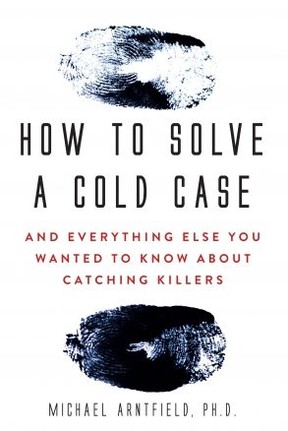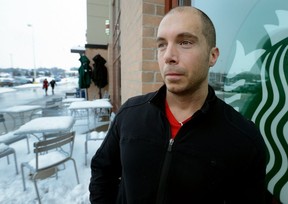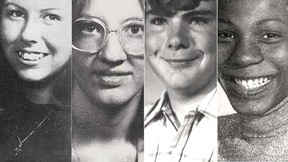
Article content
If you get murdered in America, the chances of your killer being arrested and convicted are a dismal one in two.
Advertisement 2
Article content
For the past four decades, as the homicide rate accelerated, detectives have been closing fewer and fewer cases. A shocking 250,000 unsolved murders during these dark decades.
Amid an unending bloodbath, Chicago’s clearance rate has tumbled to 25%. On the other hand, the homicide clearance rate for Toronto Police is a stellar 80%.
University of Western Ontario criminology professor Michael Arntfield, a former police officer, believes he has some answers.

Arntfield — a highly regarded expert on cold cases and serial murder — has written a new book, How to Solve a Cold Case: And Everything Else You Wanted to Know About Catching Killers (Harper Collins), that outlines just how cops and citizen detectives can turn back the tide on this heart-rending epidemic.
Advertisement 3
Article content
“Since COVID, we’ve seen that crime rates in major U.S. cities have skyrocketed and the solve rate for murders is now the lowest it’s been since they started keeping records,” Arntfield told the Toronto Sun.
And he added that there is “much reluctance” to deploy resources to solve what he called an epidemic.

But despite the carnage, there is some good news.
New technologies are leading the way for cold case detectives in clearing unsolved murders. Arntfield noted that the Toronto Police homicide unit used genomics to pin the long cold slaying of young Christine Jessop on Calvin Hoover.
“It’s making every cold case solvable,” Arntfield said, adding that DNA sophistication is growing by leaps and bounds. For example, skin cells left on a blanket from a 1990 homicide now have useable DNA extracted that can point cops in their killer’s direction.
Advertisement 4
Article content
And solving cold cases is good PR, Arntfield added, noting the big splash in Toronto when cops solved the Jessop murder.
The genealogical approach can lead investigators to family members of potential killers. It’s still a lot of work, but it can produce a name.

“These are all success stories, feats of science. But statistically, more murders were solved in the past and fewer are getting solved,” Arntfield said.
Police often keep information, aside from the bare bones, away from the public. And they don’t necessarily like having a set of outside eyes on these unresolved murders.
That’s a big mistake, Arntfield said, adding that long-dormant cases are guarded like crown jewels.
“One of the things every department could do is allow outside eyes to look at the files,” he said.
Advertisement 5
Article content
In the U.S., the Murder Accountability Project (Arntfield is a member) has pushed what’s called the Family Rights Act, which calls for a second agency or a peer review to go over the files after a certain amount of time. The bill has bipartisan approval.

One particularly grisly homicide where this law would be applicable would be the Nov. 17, 1978 Burger Chef murders in Speedway, Ind. Four young workers were taken from the restaurant and shot to death.
“There’s a lawyer in Indiana who wants the Burger Chef files unsealed. He’s fighting tooth and nail for this. The murders were 44 years ago, why the resistance?” Arntfield said.
Retired detectives and the famed Vidocq Society can be those fresh eyes in horrific murders like the Burger Chef massacre.
Advertisement 6
Article content
Arntfield also said that institutional laziness is a roadblock, noting that too many detectives “don’t look past the first Google page” when using the internet for potential clues.
That’s the downside of technology: It has the dulled instincts and hustle that are necessary to solve homicides. Still, it remains a powerful tool.
The willingness to employ genomics has been met with some controversy over privacy, but Arntfield called it “a straw-man argument”.
“In something like 23 and Me, the family knows they’re objectively related to an accused. There is some hand-wringing, but this is a quantum leap in DNA science, this is the world,” he said.

But there is also human potential, partly as a result of what Arntfield referred to as “the fourth wave of true crime.”
Advertisement 7
Article content
For decades, the Golden State Killer roamed free in California. It was a subject the late writer and amateur sleuth Michelle McNamara became obsessed with, she even gave the monster his moniker.
She would go on to write a book about the case, I’ll Be Gone in the Dark: One Woman’s Obsessive Search for the Golden State Killer, that tied a string of murders together and gave cops the direction they needed to finally nab Joseph D’Angelo.
“Many of these legacy cases seemed unsolvable, and now they’re not,” Arntfield said.
Arntfield offers a slew of suggestions to clear the heartbreaking backlog of hundreds of thousands of cold cases.
The question: Will the thick blue line listen?
How to Solve a Cold Case: And Everything Else You Wanted To Know About Catching Killers by Michael Arntfield (Harper Collins) is available in book stores as well as Amazon and Chapters Indigo.
@HunterTOSun
Stay connected with us on social media platform for instant update click here to join our Twitter, & Facebook
We are now on Telegram. Click here to join our channel (@TechiUpdate) and stay updated with the latest Technology headlines.
For all the latest For Top Stories News Click Here

